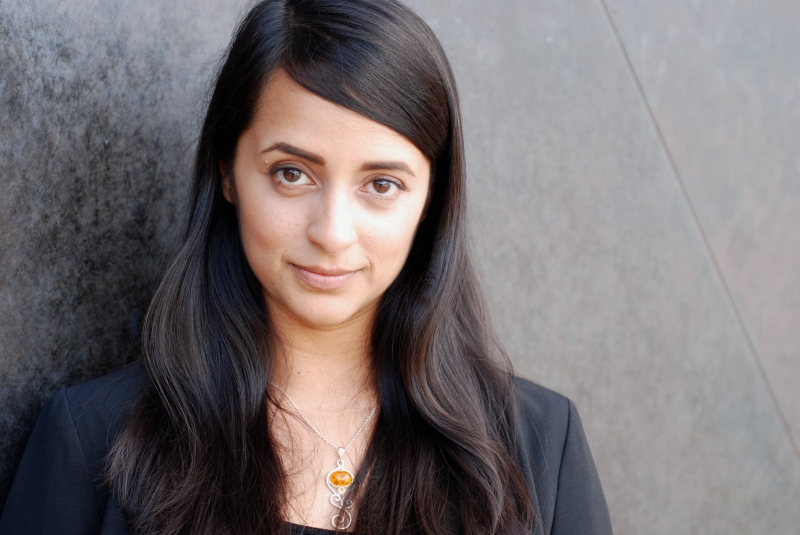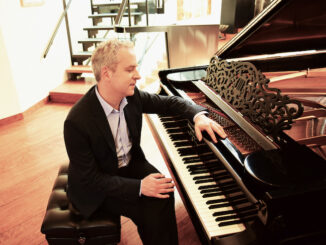
On November 10 & 12, 2018,The Chicago Sinfonietta presented Sea of Light: Reflections of Diwali at Wentz Concert Hall in Naperville and Symphony Center, Chicago, respectively. The Sinfonietta was conducted by Maestra Mei-Ann Chen, and featured guest artists Reena Esmail, composer and Gaurav Mazumdar, sitar. The first half of the program was non-traditional Eastern inspired music, the second half celebratory Western music based upon themes of light.
Diwali is a holiday celebrated around the world that got its start in India. It’s a harvest festival, but also an important religious celebration for Hindus, Jains and Sikhs. Even people who don’t belong to those three religions celebrate Diwali in India and other places in south Asia – it’s like Thanksgiving and New Year’s Eve combined. In fact, millions of people around the world celebrate Diwali – it’s an official holiday in India, Pakistan, Nepal, Sri Lanka, Malaysia, Singapore, Fiji, Myanmar, and Trinidad and Tobago.

Diwali is called the Festival of Lights because rows of lamps are lit inside and outside homes and buildings for the holiday. These lamps are called deepavali in Sanskrit, which is where we get the word Diwali. In places as far-flung as Melbourne, Australia and Leicester, England, there are fireworks and street festivals attended by tens of thousands of people; the lights line the street and even are floated down rivers on little boats. Of course, these days the traditional small lamps are joined by electric light displays and LEDs. All these lights represent the triumph of light over dark and the power of good over evil. In the Hindu religion, it’s also a time to honor the gods and goddesses.
This year, Diwali was celebrated November 5- 9, 2018. The first half of the concert was given over to the music of 2 exceptionally talented Indian composers, well versed in ragas and taal.
Raga is basically the melodic basis of Indian musical forms. In the western world musicians base their compositions on mode and scale, which are considered the equivalent of the Indian raga. Taal is considered the rhythmic basis of Indian music, be it instrumental or vocal. There are common rhythmic patterns that are used in various combinations to create musical compositions; the taal is defined as a rhythmic structure or time measure, also known as time cycle. Though taal is theoretically supposed to remain fixed within each composition, it can be repeated in cycles and each cycle can be divided into either equal or unequal parts.
The music of both the Indian composers/performers was characterized by a deep balancing of raag and taal, with Chicago Sinfonietta masterfully adapting to the repertoire.
THE PROGRAM:
– Reena Esmail Teen Murti, 2013
Indian-American composer Reena Esmail appeared on stage and sang during a portion of this beautiful piece, which Maestra Chen declared was incredibly complicated. Commissioned by the River Oaks Chamber Orchestra, and previously performed with Maestra Chen conducting, Teen Murti (Three Statues) is a musical depiction of 3 different mystical figures that are significant in the Hindu culture. Each movement or musical “tableau” focuses on a different Hindu melodic mode, or raag, and the piece as a whole, lyrically melodic, is filled with both Eastern and Western musical motifs.
– Gaurav Mazumdar, Celebration, 2018
Mazumdar has been described as “one of the most sought-after and versatile musicians today”. He introduced this lovely work, which included his glorious, mystically mysterious sitar playing both in extended solo as well as accompanying Chicago Sinfonietta, by noting he felt the presence of his guru/teacher, the great Pandit Ravi Shankar, all about him. The performance was filled with passion and sensitivity, as he sat barefoot and crosslegged at stage right, pouring forth majestic, complex melodies, surrounded and echoed by Chicago Sinfonietta.
After considerable cheering and applause, Mazumdar gave a solo performance as a tribute to Mahatma Gandhi; it was touching in the extreme to watch Chicago Sinfonietta members entranced and bemused as they listened.

– Eric Whitacre Lux Aurumque, 2000
Lux Aurumque is a Christmas choral composition in one movement based on Edward Esch’s poem, Light and Gold. Whitacre admired the “genuine, elegant simplicity” of the poem and caused it to be translated into Latin for an a cappella presentation of his composition. Whitacre’s music has been described as “softly spoken, deeply harmonic and tuneful, but making use of unusual rhythms and sound balancing to create highly textured music”.
The composer wrote in the printed score: “… if the tight harmonies are carefully tuned and balanced they will shimmer and glow”. In fact, this piece, as presented by Chicago Sinfonietta, seemed to sparkle and shine.
– Claude Debussy La Mer, 1905
It has been said that in La Mer, “the full scope of Debussy’s remarkable art is on display”. A superb depiction of the sea, it’s been described as “a vibrating, oscillating, glimmering sound complex, caressing the senses”. In La Mer, which Maestra Chen said she chose for its evocation of the light on water, the orchestral resources were not presented massed, but conducted/played with a delicacy of nuance that captured a shimmering effect of myriad colors. The strings are divided into many separate lines, and combined with the sonorities of the other instruments produce unusual yet naturalistic harmonic effects, fragmented melodies and themes that achieve a powerful series of impressions of the sea.
For information and tickets to all the wonderful programs of Chicago Sinfonietta, go to the chicago sinfonietta website




Be the first to comment